How to Increase Your Emergency Medicine Board Exam Score by 10 Points

There are many tactics you can use when preparing to take a standardized exam such as the Emergency Medicine Qualifying Exam or In-training Exam (ITE). But these two techniques are useful, easy to implement, and only require a little of your time.
Originally published 2016
The first strategy is to identify what you don’t know. Sounds easy, right? The key is to go through the curriculum and identify what you don’t know—not what you are weak at, but what you don’t know. The second strategy is to take advantage of human error. Tests are written by humans, and humans make errors. By paying attention to five types of flaws that question writers make, you can narrow down an answer choice to either the correct answer or a 50/50 probability, even without knowing anything about the topic. By combining these two strategies, you’ll be able to increase your exam score. Let’s get started.
Strategy 1: Determining your unknown unknowns
As you begin to study for your exam, you’ll find that there are areas you are comfortable with. Maybe you have a special interest in toxicology and feel confident with any question that might be asked on interpreting the Rumack-Matthew Nomogram. Because you are confident in toxicology, you spend less time reviewing it. This is one of your known knowns. There is little utility in spending too much time on your known knowns when preparing for your exam.
When I was a PGY1 resident, I realized my understanding of liver disease was poor. Hepatic encephalopathy was just a term to me. I did not understand how or why it occurred and I had a poor grasp on managing the condition. Liver disease was a known unknown. Because I recognized this specific deficiency, I was able to target my learning to diseases of the liver.
Once I started to focus my learning I came across many concepts and ideas that I knew nothing about…never even heard about some of them. These were the unknown unknowns, a concept created by psychologists Joseph Luft and Harrington Ingham. It is part of their “Johari window,” a tool that helps users identify blind spots about themselves and others.
Known unknowns are things you’re aware that you don’t know—you can recognize that you don’t understand them. Unknown unknowns, however, are unexpected because you don’t know they exist.
The way to supercharge your ITE or Emergency Medicine Qualifying Exam score is to identify your unknown unknowns. It takes a little effort, but the steps are rather easy. All you need are two things:

The system works like this.
Step 1: Answer a question from a question bank. If you get the answer wrong, read the explanation. Then write down in your notebook the part of the explanation that describes why the correct answer is correct. This process helps to identify your unknown unknowns. Subsequently, if there is any other information you did not know or somewhat knew, record it as well in your notebook under the same topic.
You must do this for every question you get incorrect. I also encourage it for questions you may have answered correctly but discovered new information in the explanation that you previously did not know.
Step 2: Start each study session by reviewing your notebook that contains your unknown unknowns. As you do more questions, you will get questions wrong on topics already recorded in your notebook. For example, if you answer a question incorrectly on which age group most commonly gets de Quervain tendinopathy, you’ll record in your notebook something like “de Quervain Tendinopathy: Epidemiology includes women between 30–50 yrs old and postpartum.” Two weeks later, if you can’t name the diagnostic test characterized by thumb flexion and ulnar deviation of the wrist, you should go back through your notebook to find your first entry on de Quervain tendinopathy and add the “Finkelstein test” as the way to diagnose the condition. While we are on the topic, here is a cheat sheet for de Quervain tendinopathy.
After a month or two of recording your incorrect answer explanations you will have a filled notebook of your unknown unknowns and maybe many of your known unknowns. If you do this on a consistent basis and get through 1,000 to 2,000 question bank questions for a 300-question standardized exam, you’ll identify most of your blind spots that questions can be asked about. You will convert your unknown unknowns to known knowns.
Here is a page taken out of my notebook from 2004 (intern year)!
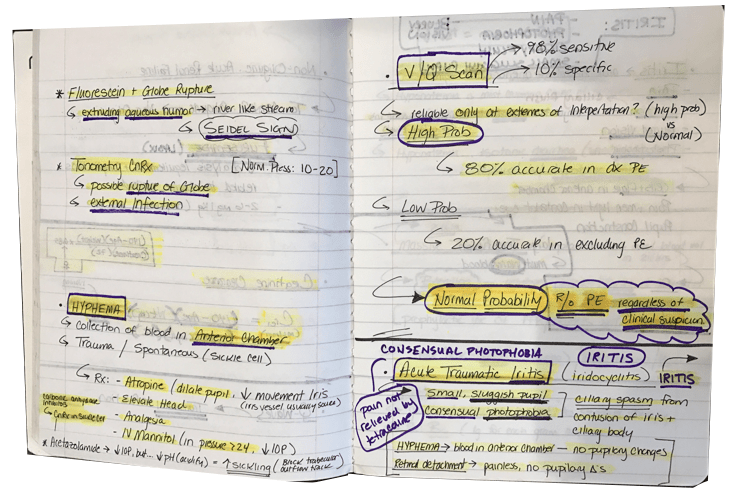
This is a composition notebook. All 100 pages (front and back) are filled with explanations from question bank questions I answered incorrectly.
I used the same system and process to prepare for my MCAT, USMLE Step, ITE, and EM qualifying exams. I even used it to learn how to read ECGs better than a cardiologist.
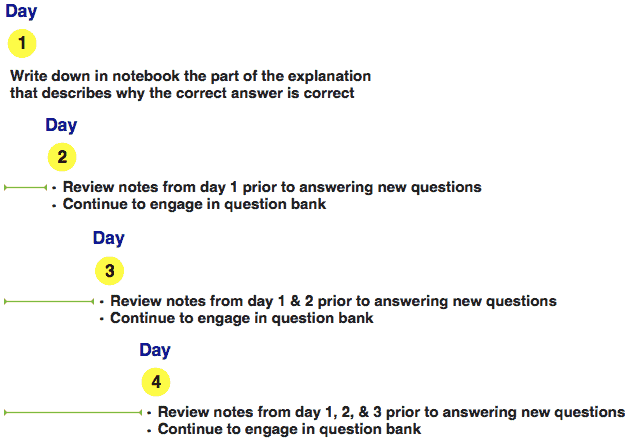
By the end of residency, after taking four ITEs, my bookshelf looked like this:
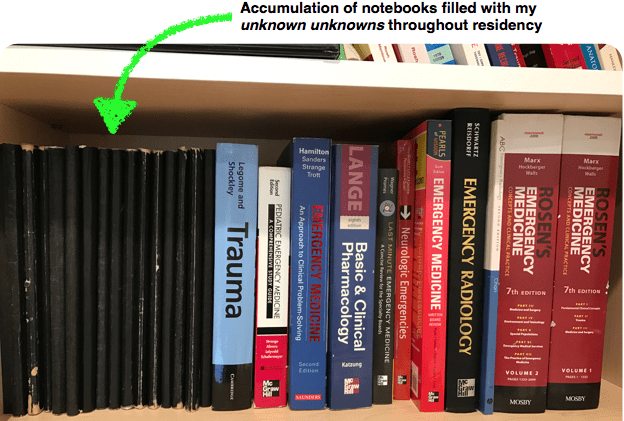
With the EM Qualifying Exam and ITE around the corner, now is the perfect time to begin this system. It leaves time for adjustment and plenty of time to accumulate your unknown unknowns.
Strategy 2: Taking advantage of human error
Earlier in this post, I mentioned that you’ll need two things to supercharge your standardized exam score: a notebook and time. The notebook you can buy any time. However, time disappears.
Taking the time to identify your unknown unknowns will prepare you for the exam. But, we know five ways you can improve your score simply by showing up to your exam.
You can use the errors made by question writers to boost your score.
The Anatomy of a Question
First, let’s understand the anatomy of a question.
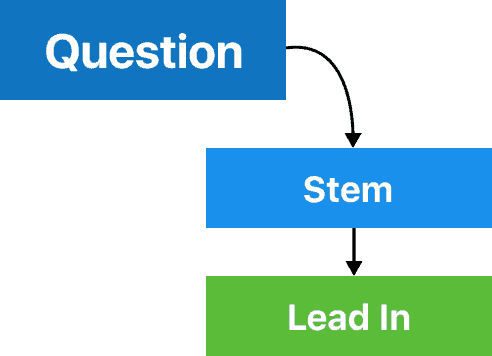
A 60-year-old woman with a history of diabetes presents to the emergency department with altered mental status and a blood glucose of 35 mg/dL. She receives 50 g of dextrose and her mental status improves. One hour later, she is confused and diaphoretic, and her blood glucose is 40 mg/dL. Which of the following agents is most likely responsible for her condition?
A question is made up of the stem and the lead-in. The stem contains the details of the question such as the clinical presentation, past medical history, and laboratory results. But, the critical part of the question is the lead-in. The question writer uses the lead-in to find out what you know or don’t know about the topic in the stem. But, it is also where question writers make errors. By applying basic grammatical analysis, you will be able to identify the correct answer or at least narrow down the answer choices without knowing anything about the topic. Here are our first two tips:
1. Pay attention to grammatical cues.
Grammatical cues: one or more answer choices (distractors) don’t follow grammatically from the lead-in.
A 60-year-old man is brought to the emergency department by the police, who found him lying unconscious on the sidewalk. After ascertaining that his airway is patent, the first step in management should be intravenous administration of which of the following?
A. CT scan of the head
B. Diazepam
C. Examination of CSF
D. Glucose with thiamine
A and C do not follow grammatically from the lead-in. A good test taker can eliminate these.
2. Focus on logical cues.
Logical cues: one or more answer choices don’t logically fit in with the other choices.
A 22-year-old man is concerned he has appendicitis. Which of the following signs is most sensitive for the diagnosis of appendicitis?
A. Nausea
B. Pain with extension of the hip joint
C. Rebound tenderness
D. Right lower quadrant tenderness
Nausea is not a “sign” and can be eliminated by a good test taker.
Let’s now focus on answer choices to identify a few more areas where we can gain an edge.
The Anatomy of Answer Choices
QUESTION: A 60-year-old woman with a history of diabetes presents to the Emergency Department with altered mental status and a blood glucose of 35 mg/dL. She receives 50 g of dextrose and her mental status improves. One hour later, she is confused and diaphoretic, and her blood glucose is 40 mg/dL. Which of the following agents is most likely responsible for her condition?
A. Glyburide
B. Metformin
C. Regular insulin
D. Rosiglitazone
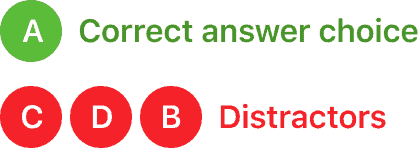
The lead-in asks about the most likely explanation, so think carefully through each answer option. Here are the distractors:
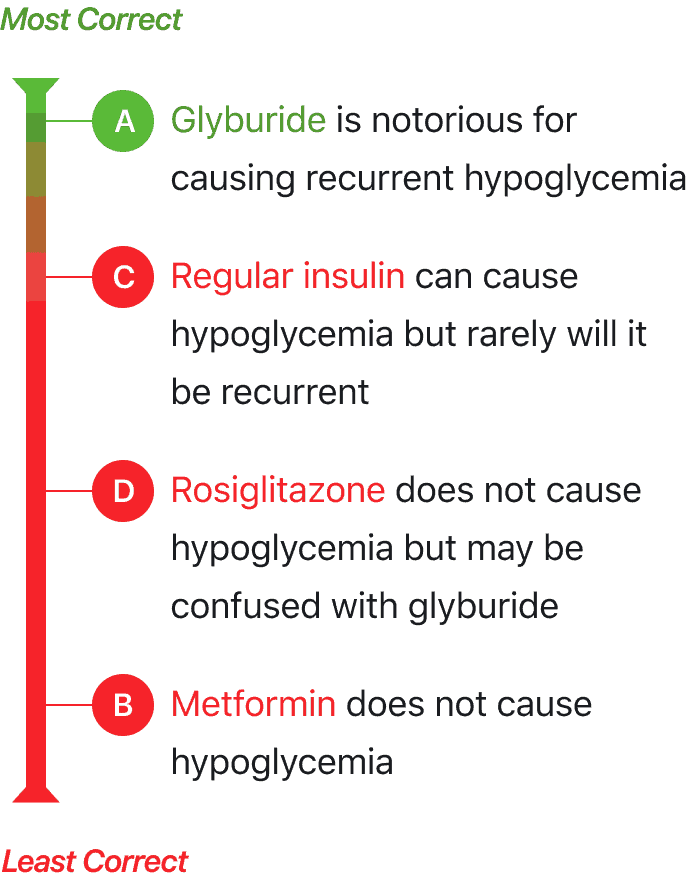
Once you understand the goal of the question writer to create answer choices that are supposed to discriminate knowledge, it is easier to exploit technical flaws and improve the odds of getting a question correct. The following three pointers round out our five tips that can help you answer a question correctly:
3. Look for answer choices containing absolute terms.
Absolute terms: terms such as “always” or “never.” When used in the answer options, these terms usually indicate an incorrect answer because they cannot hold up to scrutiny in all situations.
In patients with advanced Alzheimer disease, which of the following best characterizes the memory defect?
A. Can be treated adequately with phosphatidylcholine
B. Could be a sequela of early parkinsonism
C. Is always severe
D. Is never seen in patients with neurofibrillary tangles at autopsy
C and D contain absolute terms “always” and “never.” These should be avoided in answer choices because they are less likely to be true statements.
4. Keep an eye out for a long correct answer.
Long correct answer: the correct answer is longer, more specific, or more complete than the other options.
Secondary gain is which of the following?
A. A complication of a variety of illnesses and tends to prolong many of them
B. A frequent problem in obsessive-compulsive disorder
C. Commonly seen in organic brain damage
D. Synonymous with malingering
Option A is longer than the other options, and it is also the only double option. Item writers tend to pay more attention to the correct answer than to the distractors and write long correct answers that include additional instructional material, parenthetical information, and caveats.
5. Notice when a word repeats.
Word repeats: a word or phrase is included in the stem and in the correct answer.
A 58-year-old man with a history of heavy alcohol consumption and previous psychiatric hospitalization is confused and agitated. He speaks of experiencing the world as unreal. What is the term for this symptom?
A. Depersonalization
B. Derailment
C. Derealization
D. Focal memory deficit
This question uses the term “unreal” in the question stem, and “derealization” is the correct answer.
Taking the time to identify your unknown unknowns will not only help you prepare for and excel on your exam, it will help you expand your core knowledge. Then, on test day, use the five simple techniques to identify common flaws in questions, which will increase your chances of getting a question correct.
Give this method a try, and if you’re looking for an emergency medicine board review question bank to use…you know where to find one.
Best,
Adam Rosh, MD
Get Free Access and Join Thousands of Happy Learners
You must be logged in to post a comment.





Comments (0)